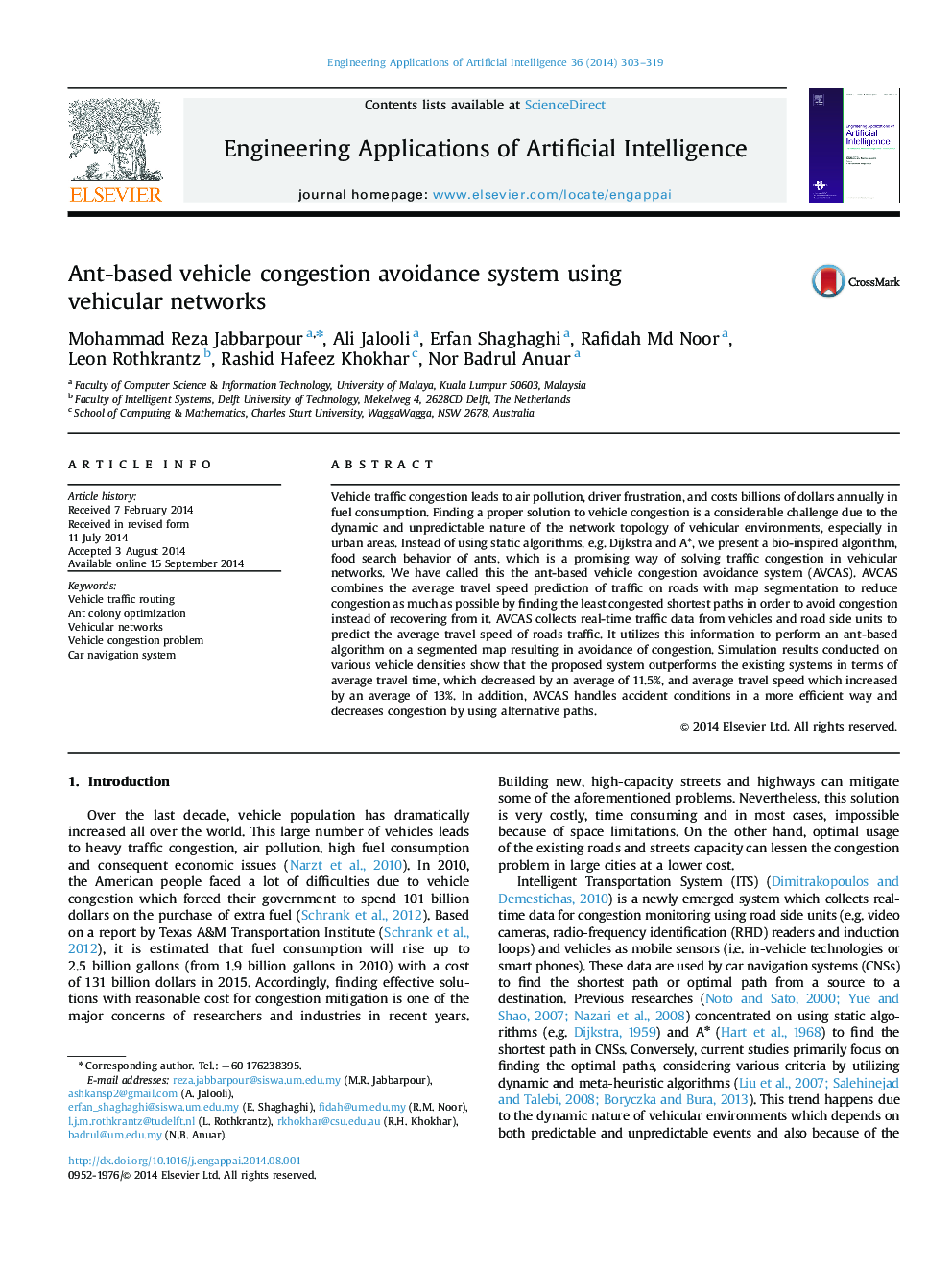| کد مقاله | کد نشریه | سال انتشار | مقاله انگلیسی | نسخه تمام متن |
|---|---|---|---|---|
| 380467 | 1437443 | 2014 | 17 صفحه PDF | دانلود رایگان |
Vehicle traffic congestion leads to air pollution, driver frustration, and costs billions of dollars annually in fuel consumption. Finding a proper solution to vehicle congestion is a considerable challenge due to the dynamic and unpredictable nature of the network topology of vehicular environments, especially in urban areas. Instead of using static algorithms, e.g. Dijkstra and A*, we present a bio-inspired algorithm, food search behavior of ants, which is a promising way of solving traffic congestion in vehicular networks. We have called this the ant-based vehicle congestion avoidance system (AVCAS). AVCAS combines the average travel speed prediction of traffic on roads with map segmentation to reduce congestion as much as possible by finding the least congested shortest paths in order to avoid congestion instead of recovering from it. AVCAS collects real-time traffic data from vehicles and road side units to predict the average travel speed of roads traffic. It utilizes this information to perform an ant-based algorithm on a segmented map resulting in avoidance of congestion. Simulation results conducted on various vehicle densities show that the proposed system outperforms the existing systems in terms of average travel time, which decreased by an average of 11.5%, and average travel speed which increased by an average of 13%. In addition, AVCAS handles accident conditions in a more efficient way and decreases congestion by using alternative paths.
Journal: Engineering Applications of Artificial Intelligence - Volume 36, November 2014, Pages 303–319
